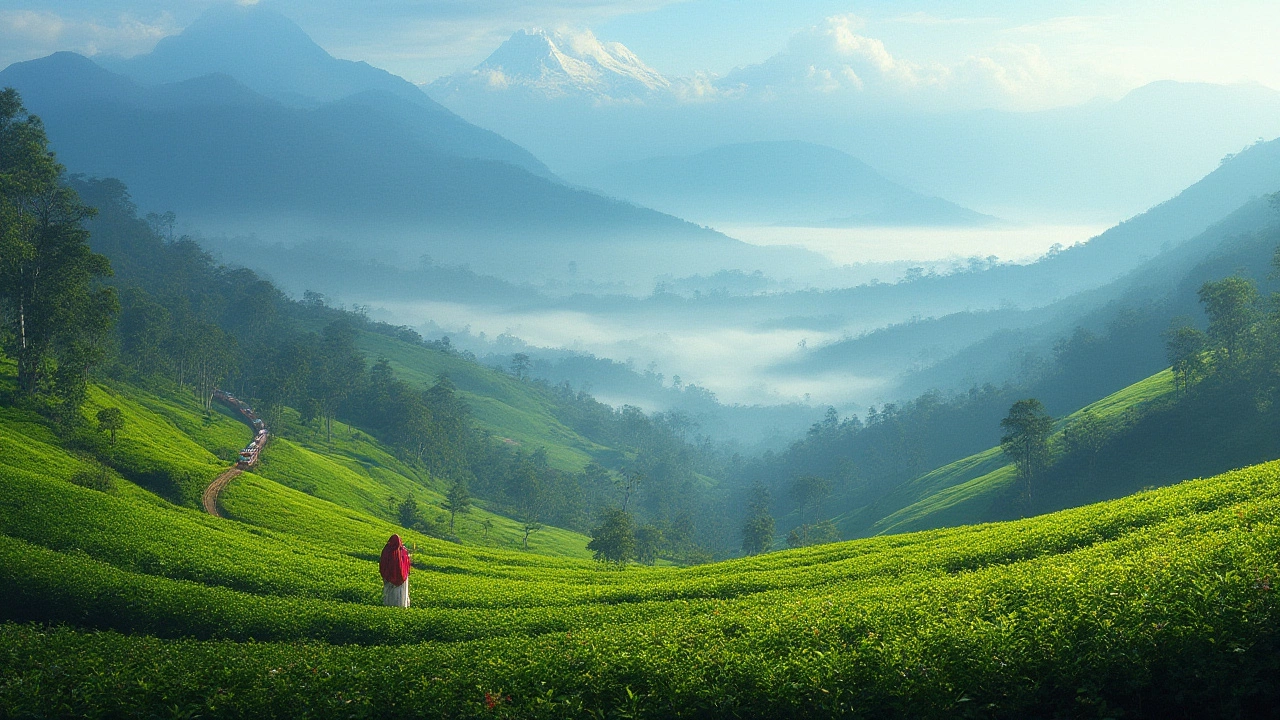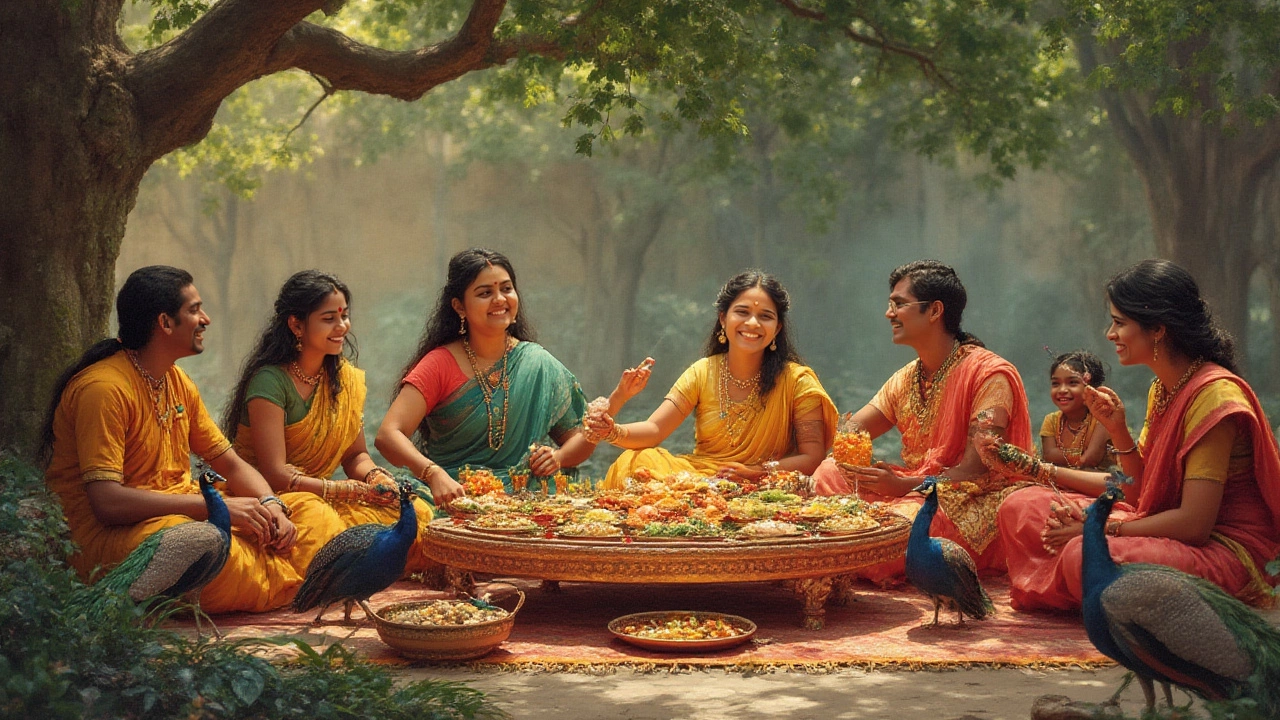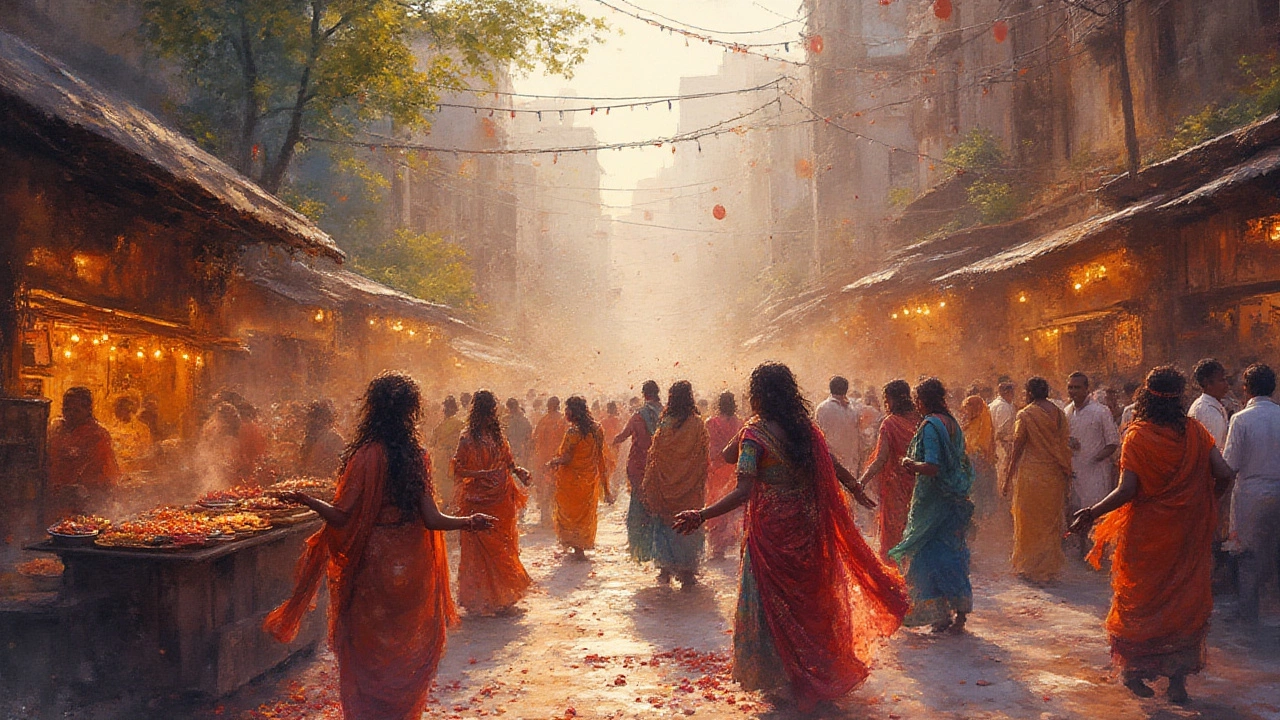Spice, color, chaos—India can’t help but pull you in and shake up everything you think you know. Where else can you wake up in the snowy arms of the Himalayas, grab lunch at a bustling city street market, and finish the evening drifting through the backwaters of Kerala on a boat lit by lanterns? It’s the sort of place where ancient rituals blend with startup dreams, where every face tells a story, and where even a noisy railway station feels like a page from some epic novel. If you think the country’s about curry and Taj Mahal alone, get ready for your perspective to implode—in the best way. Let’s get real about what makes India so darn special.
Culture That Refuses to Sit Still
India’s culture is a moving feast, never satisfied with standing in one place. Seriously, where else do you find 22 official languages and over 19,500 dialects spoken along busy bazaar lanes and in far-flung mountain hamlets? Hindi might be the most common tongue, but in the next village over, you might need to switch to Bengali, Tamil, Marathi, or even Kannada. Now, add in the scripts, the accents, and literal hand gestures that can mean one thing in Kolkata and quite another in Kochi—talk about mastering body language.
Let’s talk festivals. Holi isn’t just color-throwing chaos—it’s joy painted on faces, hair, and even dogs, a burst of springtime energy that wipes away the grayest moods. Diwali can make blackout curtains feel weak; the Festival of Lights turns every neighborhood into a fairy tale, as millions of lamps and fireworks crackle through the night. Eid, Pongal, Navratri, Baisakhi—it’s a calendar that never goes dark. Even local fairs, like Jaipur’s Teej or the quirky Hornbill Festival in Nagaland, fill the streets with parading elephants, live music, and food cooked in massive cauldrons strong enough for a Bollywood villain to fall into.
What does daily life look like? One minute you’ll spot a barefoot monk chanting by a temple, the next, you’ll run into a teenager plotting his next Instagram reel outside a traffic jam. Modernity and tradition, often right next to each other, somehow make sense—an IT coder lighting incense before work or an auntie delivering homemade sweets to tech offices during festivals. Yoga, which millions of people wake up to worldwide, began on riverbanks here thousands of years ago. Ayurveda, which your foodie friend swears by, is still used to heal both body and mind, with clinics lining streets in Kerala and Goa. Family life, arranged marriages, fierce debates about cricket, jokes about the neighbor’s overly spicy curry—it’s all on the same dinner table, every day.
If you want to catch all of India in one place, it can feel impossible, but there’s a trick: watch people. In the streets of Delhi, you’ll meet history professors who can recite poetry off the cuff, chai sellers who discuss stock prices, and grandmothers who know every neighbor in their block—along with the entire family tree. Bollywood, too, isn’t just about big musicals; it’s a mirror, reflecting how the country sees itself (and sometimes wishes it could be). The latest blockbuster, "Pathaan," grossed over ₹1,000 crore worldwide, showing just how global desi dreams have become.
| Aspect | India | USA | UK |
|---|---|---|---|
| Languages Spoken | 19,500+ | ~350 | 12 |
| Festivals Each Year | Over 1000 | 50+ | ~40 |
| Ethnic Groups | 2000+ | ~100 | ~15 |
| Annual Film Production | 1800+ | 800+ | 250+ |
Some tips? Don’t just stick to the big cities—smaller towns like Udaipur, Hampi, and Shillong offer cultural surprises you won’t find in any guidebook. Be bold, try street food (watch the spice!), hit up a temple aarti, and talk to locals—everyone has a story, and most are happy to share. Even a quick ride on a local train will show you how fast life moves and how easily strangers become friends over a cup of chai.

A Landscape That Keeps Changing Its Mind
If India had a mood ring, it’d change color every few hundred kilometers. Mountains, deserts, jungles, beaches—you name it, it’s here, sometimes all in one state. In the north, the Himalayas rise in moody blues and whites, calling trekkers to Ladakh or the spiritual stillness of Rishikesh. Dive south, and you’ll get palm-draped shores in Kerala, rain-drenched Western Ghats bursting with wildlife, and the easy humidity of the Andaman Islands, where coral reefs make for the best snorkeling in Asia.
Ever heard of the Thar? Rajasthan’s desert is more than sand: think echoing forts, camel safaris under starlit skies, towns painted pastel pink or blue, and festivals where dancers spin like tops. Then there’s the lush northeast, a puzzle of mountains, waterfalls, and root bridges—manmade wonders woven from living tree roots in Meghalaya. These bridges aren’t just Instagram gold, they’re proof that nature and human ingenuity work together here, not at odds.
Wildlife? Let’s get serious for a second. India is one of the few places you might spot a tiger prowling through tall grass, elephants cooling off in a river, or peacocks flaunting their feathers at sunrise. There are more than 500 wildlife sanctuaries, and 104 national parks—Kanha, Kaziranga, Gir—protecting everything from rhinos to lions to elusive snow leopards. Birdwatchers? Keoladeo and Bharatpur alone can clock you 350+ species in a day.
Don’t forget the rivers. The Ganges isn’t just a river—it’s a lifeline, a spiritual icon, a bathing spot, and an open-air laundry. Boats float past Varanasi’s ghats where pilgrims light candles and set them adrift, hoping for blessings. Down south, backwaters of Kerala twine through coconut groves and sleepy villages; try a houseboat stay and you’ll know relaxation. And if you come during monsoon? Hill stations like Munnar or Coorg turn butter-green and waterfalls thunder to life. Pro tip: pack layers—weather shifts fast, especially during shoulder season, and no one likes a soggy shoe.
People love road trips here, and routes are wild. Manali to Leh is an epic drive where you might need to swerve around goats, monks, and motorcycles—in that order. Tea lovers will die happy in Assam or Darjeeling; vineyards in Nashik offer wine tastings with a view of volcanic hills. Want to surf? The beaches of Gokarna and Varkala have the sun, sand, and gentle waves. If hiking’s your thing, start with the Valley of Flowers or Hampta Pass; chances are, you’ll run into college trekkers and local shepherds ready to swap trekking stories and maybe even share a snack.
Here’s a good tip: always have cash handy, and never underestimate train journeys. Indian Railways is the world’s fourth largest rail network, moving millions every day. Book your tickets early—festivals and holidays sell out in a flash. And yes, buy street fruits, but stick to vendors with busy stalls (they turn over stock quickly). Trust your gut and your sense of adventure—the country’s natural wonders demand it.

Everyday Magic: Food, People, and The Surprises In Between
It’s impossible to talk about what’s special in India without getting hungry. Street food isn’t just cheap—it’s addictive. Pani puri, masala dosa, pav bhaji, kebabs, jalebi—step outside, follow your nose, and jump in. Each city claims its own top snack; Mumbai’s vada pav tastes best during a summer monsoon, and in Kolkata, kathi rolls double as breakfast, lunch, or midnight munchies. Some state governments actually compete to name their official dish—the rivalry is real.
The thing is, Indian food changes every few kilometers. What’s considered spicy in Udaipur might feel mild in Hyderabad, where biryani packs enough punch to make you sweat but smile. Down south, coconut and curry leaves steal the show; in the northeast, look for bamboo shoot stews or smoked meats you’ll never find anywhere else. Sweets? Bengal’s roshogolla melt in your mouth, Punjab swears by ghee-drenched jalebi, and Gujarat serves up salty-sweet dhokla for breakfast. Bring a big appetite and skip pricey hotel buffets—eat with locals or in small family-run cafés.
But food’s just the first layer. What really hits home is the warmth—sometimes too much, if you’re not used to unfiltered honesty. People in India are quick to offer you chai, a seat at their table, or directions (even if they don’t actually know the way). There’s a culture of "atithi devo bhava," meaning, "the guest is God." It’s why you’ll walk into a random home and be offered snacks, tea, or sometimes a full vegan meal before you can even ask.
Unexpected beauty is always around the corner: a backstreet mural, an ancient stepwell covered in moss, wedding processions with drums loud enough to block traffic, and, in the countryside, fields the color of turmeric under monsoon light. Even the chaos—the honking, the cricket street matches, the grandmothers arguing in markets—starts to feel like a symphony that somehow works.
Forget the clichés that India is only about poverty or noise. The country has the world’s largest population (1.43 billion as of 2024), almost half under 25, and it’s leading the world in mobile payments, space technology (remember Chandrayaan-3’s Moon landing?), and startup launches. Still, if you wander away from the tech parks, you’ll find peace under temple bells, or in gentle conversations with older folks reciting folk tales from a shaded porch.
Travel tip: keep an open mind, a half-charged phone (for all the photos), and never rush. India gives out its secrets slowly, but every surprise—a plate of piping hot samosas, a spontaneous invite to a wedding, a quiet morning watching red kites soar—reminds you that ordinary here often feels extraordinary. That’s what’s special in India: it’s not one thing, it’s how all those things tumble together, wild and wonderful.
